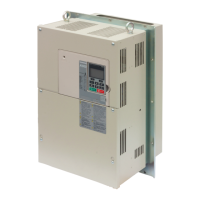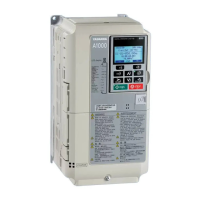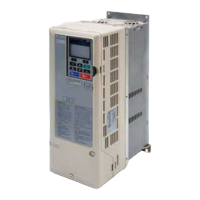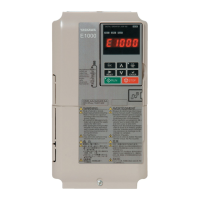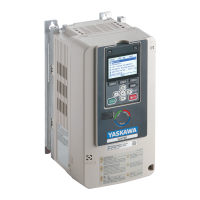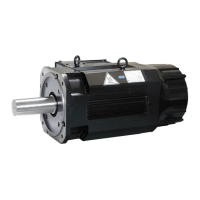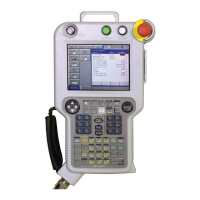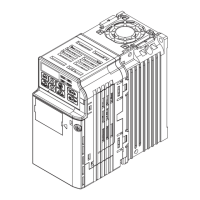5.7 H: Terminal Functions
262 YASKAWA ELECTRIC SIEP C710616 27G YASKAWA AC Drive A1000 Technical Manual
Setting D: Frequency bias
The input value of an analog input set to this function will be added to the frequency reference. This function can be used
with any frequency reference source.
Setting E: Motor temperature
In addition to motor overload fault detection oL1, it is possible to use a PTC (Positive Temperature Coefficient)
thermistor for motor insulation protection. Connect the PTC to analog input terminal A3, and set switch S4 on the
terminal board to PTC. Refer to Terminal A3 Analog/PTC Input Selection on page 90 for details on setting S4. Refer to
Motor Protection Using a Positive Temper
ature Coefficient (PTC) on page 270 for further explanation.
Setting F, 1F: Through mode
When set to F or 1F, an input does not affect any drive function, but the input level can still be read out by a PLC via a
communication option or MEMOBUS/Modbus communications.
Setting 10, 11, 12, 15: Forward, Reverse, Regenerative, General torque limit (OLV, CLV, AOLV/PM, CLV/PM)
These functions can be used to set a torque limit using analog inputs for different operating conditions. Refer to L7:
Torque Limit on page 294 for details.
Setting 13: Torque Limit Using Torque Reference/Speed Control
When using Torque Control, an analog input programmed to this function can set the torque reference (when in Torque
Control) or the torque limit (when in Speed Control). Refer to Setting the Torque Reference, Speed Limit, and Torque
Compensation Values on page 207 for details.
Setting 14: Torque compensation
Used to set a torque compensation value when using Torque Control. Refer to Setting the Torque Reference, Speed
Limit, and Torque Compensation Values on page 207 for details.
Setting 16: Differential PID Feedback
If an analog value is set for this function, the PID controller is set for differential feedback. The subtraction of the PID
feedback input value and the differential feedback input value builds the feedback value that is used to calculate the PID
input. Refer to PID Feedback Input Methods on page 169.
Setting 17: Motor Thermistor (NTC)
Used as a complement or a substitution for oL1. Refer to Motor Protection Using a Positive Temperature Coefficient
(PTC) on page 270.
Setting 30, 31, 32: DriveWorksEZ Analog Input 1, 2, 3
These settings are for functions used in DriveWorksEZ. Normally there is no need to change or apply these settings.
H4: Multi-Function Analog Outputs
These parameters assign functions to analog output terminals FM and AM for monitoring a specific aspect of drive
performance.
H4-01, H4-04: Multi-Function Analog Output Terminal FM, AM Monitor Selection
Sets the desired drive monitor parameter U- to output as an analog value via terminal FM and AM. Refer to U:
Monitors on page 510 for a list of all monitors. The “Analog Output Level” column
indicates if a monitor can be used
for analog output.
Example: Enter “103” for U1-03.
A setting of 031 or 000 applies no drive monitor to the analog output. With this setting, terminal functions as well as FM
and AM output levels can be set by a PLC via a communication option or MEMOBUS/Modbus (through mode).
No. Name Setting Range Default
H4-01
Multi-Function Analog Output Terminal FM Monitor Selection
000 to 999 102
H4-04
Multi-Function Analog Output Terminal AM Monitor Selection
000 to 999 103

